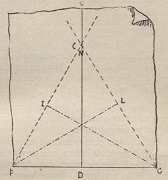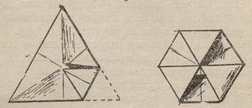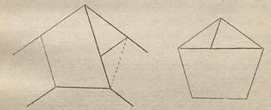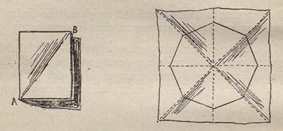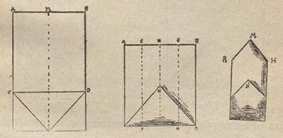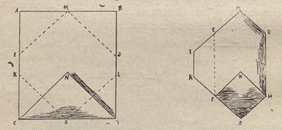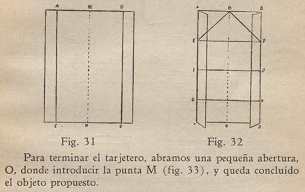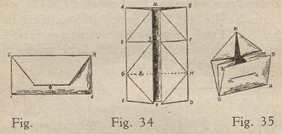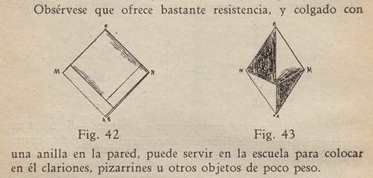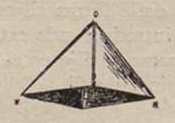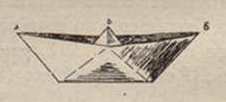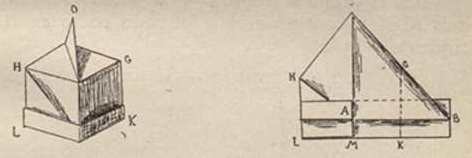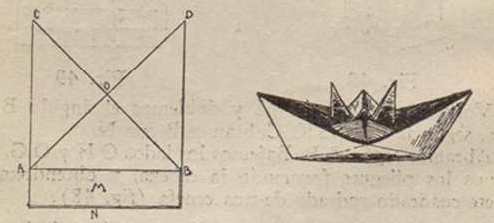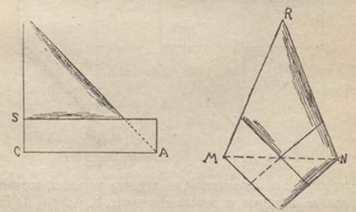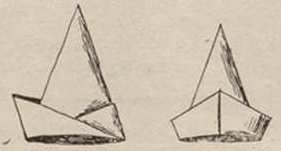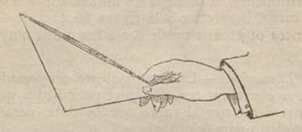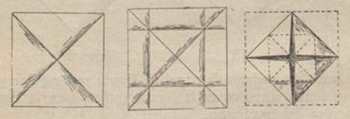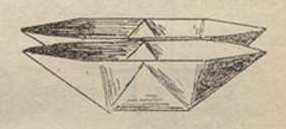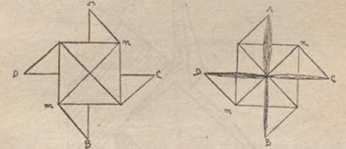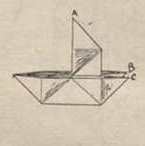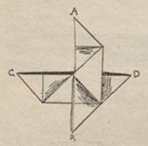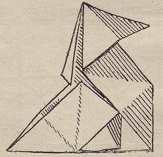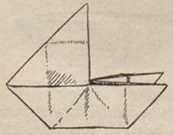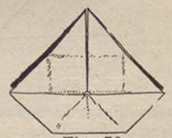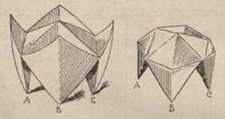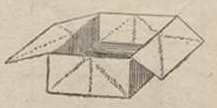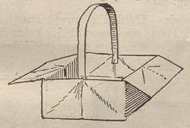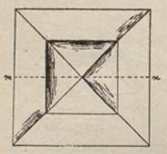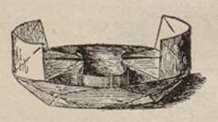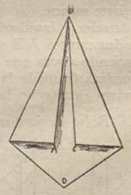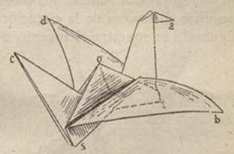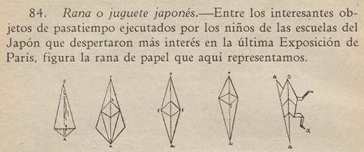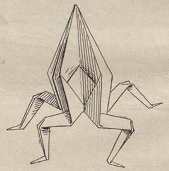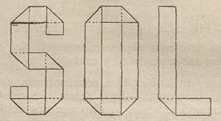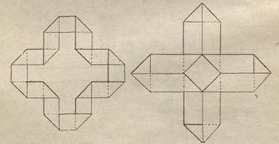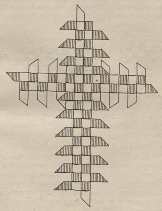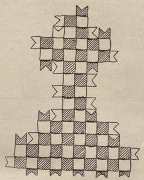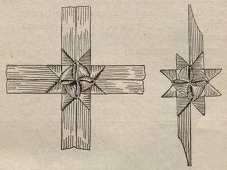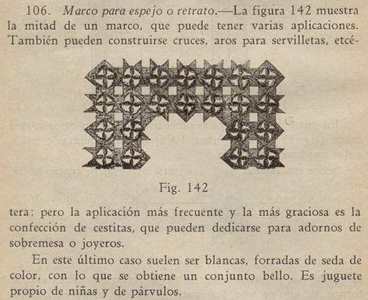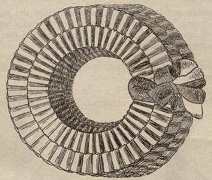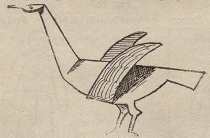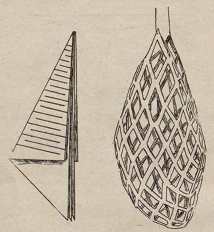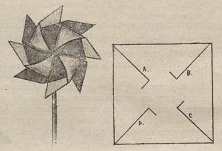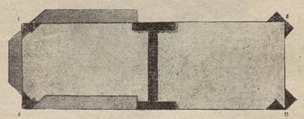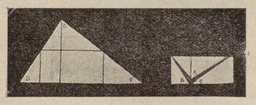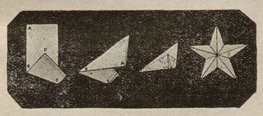| The Public Paperfolding History Project
x |
|||||||
| Guia Practica del Trabajo Manual Educativo by Ezequiel Solana, 1904 | |||||||
| 'Guia
Practica del Trabajo Manual Educativo' by Ezequiel Solana
was published by Editorial Magisterio Espaņol in Madrid
in 1904. The information on this page is taken from the
1934 Ninth edition but I believe that this is identical
to the original. The book is divided into three sections, of which the first is of particular relevance here: 1. Trabajos en papel (Works in paper) 2. Trabajos en carton (Works in cardboard) 3. Trabajos en alambre (Works in wire) A full copy of the 1934 edition can be accessed online at http://bdh-rd.bne.es/viewer.vm?lang=en&id=0000204532&page=1 I have not included full details of the early introductory chapters. ********** Works in Paper Chapter 3 - Figuras Geometricas Poligonales How to construct an Equilateral Triangle
********** How to construct a Regular Hexagon
********* How to construct a Regular Pentagon (The Pentagonal Knot)
********** How to construct a Regular Octagon
********** Chapter 5 - Formas de Objectas Usuales (Everyday Objects) Papelera 1 (Waste Paper Basket -1)
********** Papelera 2 (Waste Paper Basket - 2)
********** Tarjetero 1 (Visiting Card Holder 1)
********** Tarjetero 2 (Visiting Card Holder 2)
********** Sombrero del Tres Picos (Three Cornered Hat) - The Newspaper Hat
********** Mitre - The Mitre
********** Estuche para Portaplumas y Lapiceros (Pen and Pencil Case) - The Pencil Case
********** Rinconera (Corner) - The Wall Pocket The wording says 'hung on a ring on the wall it can be used at school to hold clarions, blackboards and other small objects.' It may, perhaps, be called a Corner because that is where it would be hung to best advantage.
********** Montera - The Pyramidal Hat The wording says 'There are several forms of monteras: We are going to explain a well-known one.'
********** Barco (Boat) - The Paper Boat
********** Sombreros de la Edad Media (Medieval Hat)
********** Sombrero Cuadrado (Square Hat) - Le Bonnet Carre
********** Mitra de Dos Puntas (Two-pointed Mitre)
********** Barca con Tres Mastiles (Boat with Three Masts)
********** Sombrero de Magico 1(Magic Hat 1)
********** Gorra sin Visera (Cap without Visor)
********** Sombrero de Magico 2 (Magic Hat 2)
********** Tronadora (Thunder) - The Single-Barrelled Banger
********** Mesa (Table) - The Table
********** Barco Doble - The Double Boat
********** Molinete - The Windmill
********** Cuna (Cradle) - The Boat with Sail
********** El Pico de un Ave de Rapina (The Beak of the Bird of Prey) - The Monster Fish
********** Pajarita - The Cocotte / Pajarita ' Of this design the author notes, 'Among all the folding figures none is as well-known as this one. Rare is the child who does not know how to make it.'
********** Barco de Vela - The Double Boat with Sail
*********** Un Barco de Dos Velas - The Double Boat with Two Sails
********** Purera y Salero (Ashtray? and Salt Cellar) - The Salt Cellar and the Pepperpot Curiously, the version with the corners folded down, pictured on the right, which is normally known as the Pepperpot, is called the 'Salero', and the version on the left, which is normally known as the Salt Cellar, is called the 'Purera'.
********** Portamonedas (Coin Purse) - The Coin Wallet
********** Caja sin Tapa (Box without Lid) - The Junk Box
********** Una Cesta Muy Graciosa (A Very Amusing Basket) - The Junk Box Basket
********** Espejo (Mirror) - The Looking Glass
********** Gondola - The Chinese Junk
********** Tienda de Campana - Tent
*********** Bolsa de Boticario (Apothecary Bag) - a simpler version of The Rectangular Packet
********** Bolsa de Jardinero (Gardener's Bag) - The Hexagonal Packet
********** Cometa (Kite) - Simple Kite that Flies
********** Pajarita de Movimiento - The Flapping Bird
********** Rana o Juguete Japonais (Frog or Japanese Toy) - The Blow-up Frog The introduction reads 'Among the interesting hobby objects made by children in the schools in Japan that aroused the most interest at the last Paris Exposition is the frog we represent here.' Presumably this is a reference to the Exposition Universelle de Paris of 1900.
There is no mention of the frog being capable of being inflated or made to jump.
********** Chapter 3 - Entrelazado y Trenzado - (Interlaced and Braided) This section begins with a number of exercises about different kinds of interlacing and braiding. If you are interested in these you can find them by following the link at the top to the full text of this book. ********** Formacion de letras - Letters from Folded Strips Only three example letters are given.
********** Motivas Ornamentales - Ornamental Motifs
********** The next section deals with designs that can be made by interlacing four strips together (Entrelazar cuatro tiras) and interlacing strips freely (Entrelazado libre de tiras). Construir una Cruz Sencilla (Build a Simple Cross) - a version of The Woven Cross
********** Construir una Cruz con Pedestal - another version of the same design.
********** Construir une Estrella de Enlace con Ocho Puntas (Build a Star with Eight Points) - The Froebel Star
********** Marco para Espejo o Retrato (Frame for Mirror or Portrait) - Linking Froebel Stars
Roughly translated the text says 'Half of a frame which can have multiple applications. Crosses, napkin rings etc can also be built, but the must frequent and amusing application is that of making baskets which can be used for decorations or jewellery boxes. In the latter case they are usually white, lined with coloured silk, which produces a beautiful ensemble. It is a toy for girls and toddlers.' ********** Cadena Sin Fin (Endless Chain)
********** Chapter 5 - Recortado - (Cutting Out) This chapter contains instructions for making many fold and cut patterns using various folding geometries as well as fold, cut and fold animals, one example of which is shown below.
********** The chapter concludes with an explanation of the Fold and Slit Cage.
********** Chapter 9 - Recorte de Adorno - (Cutting Out Ornaments) - ie Cardboard Modelling El Molino - The Cut and Fold Windmill (double version)
********** Cubiertos para Libros - How to Cover a Book
********** Chapter 10 - Derivaciones Poliedricas - Polyhedral Derivations This chapter provides cut out and fold up nets for the platonic solids, cylinder and cone and various boxes and other containers. ********** Chapter 11 - Demonstraciones Geometricas - Geometric Demonstrations Angulos del Triangulo - Summing the Angles of a Triangle
********** Poligonos Estrellados - The Fold and One Cut Pentagram
********** |
